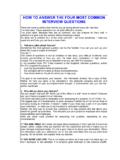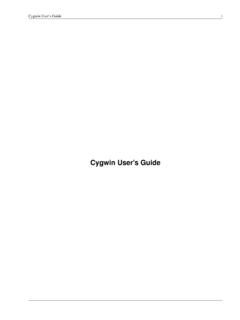Transcription of OPERATING - materias.fi.uba.ar
1 OPERATING . SYSTEM. CONCEPTS. NINTH EDITION. OPERATING . SYSTEM. CONCEPTS. ABRAHAM SILBERSCHATZ. Yale University PETER BAER GALVIN. Pluribus Networks GREG GAGNE. Westminster College NINTH EDITION. ! Vice!President!and!Executive!Publisher! ! ! Don!Fowley! Executive!Editor! ! ! ! ! Beth!Lang!Golub! Editorial!Assistant! ! ! ! ! Katherine!Willis! Executive!Marketing!Manager!! ! ! Christopher!Ruel! Senior!Production!Editor! ! ! ! Ken!Santor! Cover!and!title!page!illustrations! ! ! Susan!Cyr! Cover!Designer! ! ! ! ! Madelyn!Lesure! Text!Designer!! ! ! ! ! Judy!Allan! ! ! ! ! ! This!book!was!set!in!Palatino!by!the!aut hor!using!LaTeX!and!printed!and!bound!by !Courier". Kendallville.!
2 The!cover!was!printed!by!Courier.! ! ! Copyright! !2013,!2012,!2008!John!Wiley!&!Sons,!Inc .!!All!rights!reserved.! ! No!part!of!this!publication!may!be!repro duced,!stored!in!a!retrieval!system!or!t ransmitted!in!any! form!or!by!any!means,!electronic,!mechan ical,!photocopying,!recording,!scanning! or!otherwise,! except!as!permitted!under!Sections!107!o r!108!of!the!1976!United!States!Copyrigh t!Act,!without! either!the!prior!written!permission!of!t he!Publisher,!or!authorization!through!p ayment!of!the! appropriate!per"copy!fee!to!the!Copyrigh t!Clearance!Center,!Inc.!222!Rosewood!Dr ive,!Danvers,! MA!01923,!(978)750"8400,!fax!(978)750"44 70.!Requests!to!the!Publisher!for!permis sion!
3 Should!be! addressed!to!the!Permissions!Department, !John!Wiley!&!Sons,!Inc.,!111!River!Stre et,!Hoboken,!NJ! ! Evaluation!copies!are!provided!to!qualif ied!academics!and!professionals!for!revi ew!purposes! only,!for!use!in!their!courses!during!th e!next!academic!year.!!These!copies!are! licensed!and!may! not!be!sold!or!transferred!to!a!third!pa rty.!!Upon!completion!of!the!review!peri od,!please!return! the!evaluation!copy!to!Wiley.!!Return!in structions!and!a!free"of"charge!return!s hipping!label!are! available!at! !Outside!of!the!United!States,!please!co ntact!your! local!representative.! ! Founded!in!1807,!John!Wiley!&!Sons,!Inc. !has!been!a!valued!source!of!knowledge!a nd! understanding!
4 For!more!than!200!years,!helping!people! around!the!world!meet!their!needs!and! fulfill!their!aspirations.!Our!company!i s!built!on!a!foundation!of!principles!th at!include! responsibility!to!the!communities!we!ser ve!and!where!we!live!and!work.!In!2008,! we!launched!a! Corporate!Citizenship!Initiative,!a!glob al!effort!to!address!the!environmental,! social,!economic,! and!ethical!challenges!we!face!in!our!bu siness.!Among!the!issues!we!are!addressi ng!are!carbon! impact,!paper!specifications!and!procure ment,!ethical!conduct!within!our!busines s!and!among! our!vendors,!and!community!and!charitabl e!support.!For!more!information,!please! visit!our! website:! !!! ! ! ! ISBN:!!978"1"118"06333"0!
5 ISBN!BRV:!!978"1"118"12938"8! ! Printed!in!the!United!States!of!America! ! 10!!!9!!!8!!!7!!!6!!!5!!!4!!!3!!!2!!!1! To my children, Lemor, Sivan, and Aaron and my Nicolette Avi Silberschatz To Brendan and Ellen, and Barbara, Anne and Harold, and Walter and Rebecca Peter Baer Galvin To my Mom and Dad, Greg Gagne Preface OPERATING systems are an essential part of any computer system. Similarly, a course on OPERATING systems is an essential part of any computer science education. This field is undergoing rapid change, as computers are now prevalent in virtually every arena of day-to-day life from embedded devices in automobiles through the most sophisticated planning tools for governments and multinational firms.
6 Yet the fundamental concepts remain fairly clear, and it is on these that we base this book. We wrote this book as a text for an introductory course in OPERATING systems at the junior or senior undergraduate level or at the first-year graduate level. We hope that practitioners will also find it useful. It provides a clear description of the concepts that underlie OPERATING systems. As prerequisites, we assume that the reader is familiar with basic data structures, computer organization, and a high-level language, such as C or Java. The hardware topics required for an understanding of OPERATING systems are covered in Chapter 1. In that chapter, we also include an overview of the fundamental data structures that are prevalent in most OPERATING systems.
7 For code examples, we use predominantly C, with some Java, but the reader can still understand the algorithms without a thorough knowledge of these languages. Concepts are presented using intuitive descriptions. Important theoretical results are covered, but formal proofs are largely omitted. The bibliographical notes at the end of each chapter contain pointers to research papers in which results were first presented and proved, as well as references to recent material for further reading. In place of proofs, figures and examples are used to suggest why we should expect the result in question to be true. The fundamental concepts and algorithms covered in the book are often based on those used in both commercial and open-source OPERATING systems.
8 Our aim is to present these concepts and algorithms in a general setting that is not tied to one particular OPERATING system. However, we present a large number of examples that pertain to the most popular and the most innovative OPERATING systems, including Linux, Microsoft Windows, Apple Mac OS X, and Solaris. We also include examples of both Android and iOS, currently the two dominant mobile OPERATING systems. The organization of the text reflects our many years of teaching courses on OPERATING systems, as well as curriculum guidelines published by the IEEE. vii viii Preface Computing Society and the Association for Computing Machinery (ACM). Consideration was also given to the feedback provided by the reviewers of the text, along with the many comments and suggestions we received from readers of our previous editions and from our current and former students.
9 Content of This Book The text is organized in eight major parts: Overview. Chapters 1 and 2 explain what OPERATING systems are, what they do, and how they are designed and constructed. These chapters discuss what the common features of an OPERATING system are and what an OPERATING system does for the user. We include coverage of both traditional PC and server OPERATING systems, as well as OPERATING systems for mobile devices. The presentation is motivational and explanatory in nature. We have avoided a discussion of how things are done internally in these chapters. Therefore, they are suitable for individual readers or for students in lower-level classes who want to learn what an OPERATING system is without getting into the details of the internal algorithms.
10 Process management. Chapters 3 through 7 describe the process concept and concurrency as the heart of modern OPERATING systems. A process is the unit of work in a system. Such a system consists of a collection of concurrently executing processes, some of which are OPERATING -system processes (those that execute system code) and the rest of which are user processes (those that execute user code). These chapters cover methods for process scheduling, interprocess communication, process synchronization, and deadlock handling. Also included is a discussion of threads, as well as an examination of issues related to multicore systems and parallel programming. Memory management. Chapters 8 and 9 deal with the management of main memory during the execution of a process.













